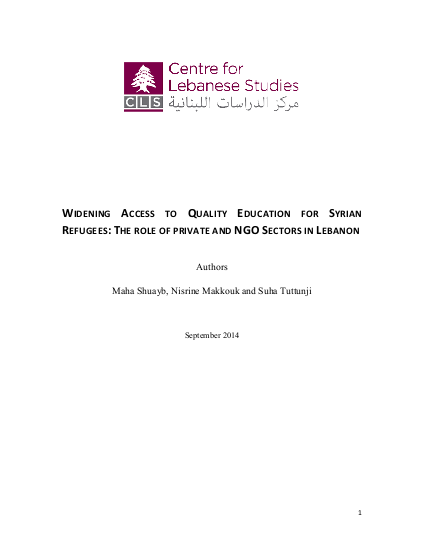
As the Syrian crisis enters the fourth year, there is a timely need to reflect on the wider implications on Lebanon. The influx of over a million and half Syrian refugees brought a total of 400,000 school age refugees to Lebanon. This demographic shift posed a formidable challenge to an education system suited to deliver education to a national student population of just over 900,000. To date, the Lebanese Ministry of Education and Higher Education (MEHE) which only hosts 30% of the student population in Lebanon shouldered the burden of education service delivery with support from the international community and UN agencies. However, public sector limitations pointed to its inability to accommodate the total number of Syrian refugee students, and thus warranted further exploration of the role for NGOs and the private sector. While the MEHE and donors widely acknowledge – to some extent – the role of NGOs in the delivery of education, the private sector role has been overlooked to date.
This study examines access and quality of education for Syrian refugees enrolled in both the private and NGO sectors through case studies of 13 schools and NGOs with education programmes. The Inter-Agency Network for Education in Emergencies (INEE) standards for education in emergencies has been employed as a conceptual framework to examine access and quality of education both in the formal and non-formal education settings.
